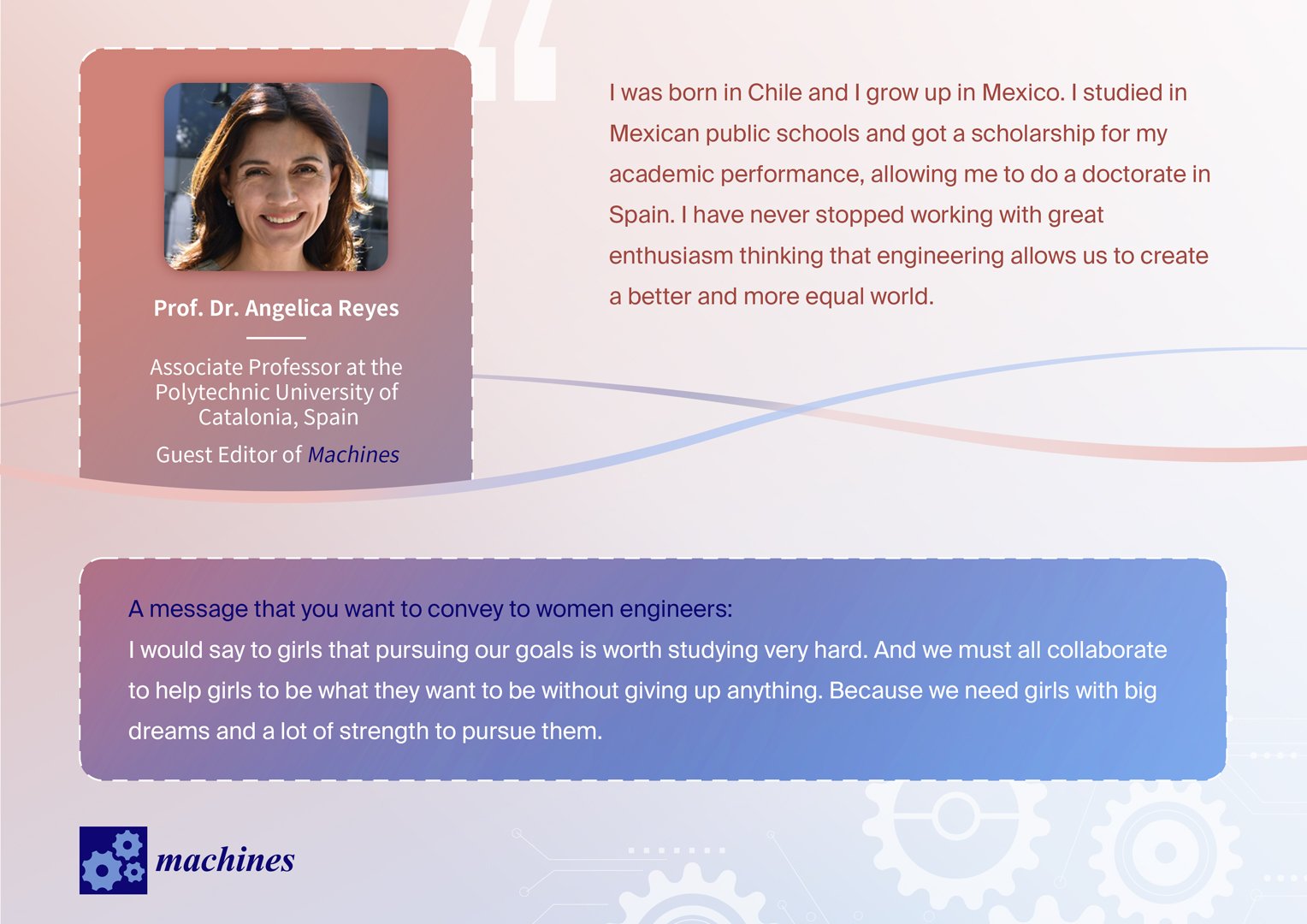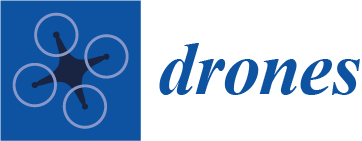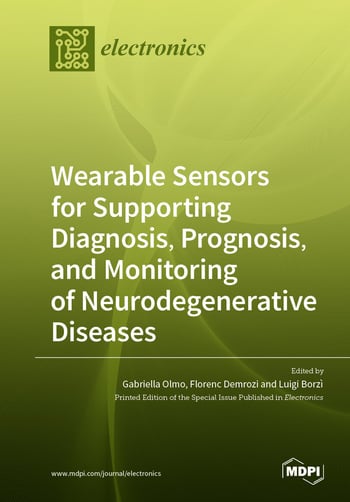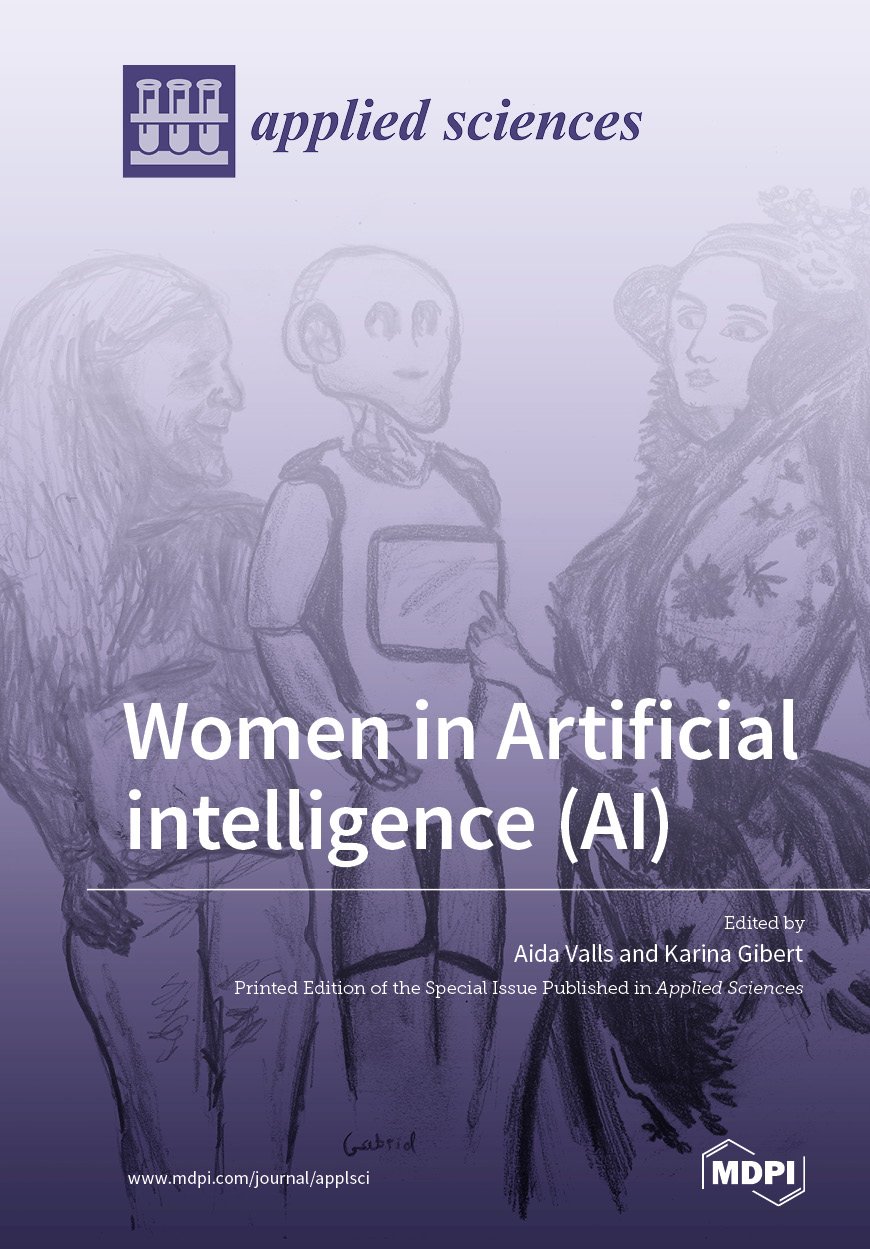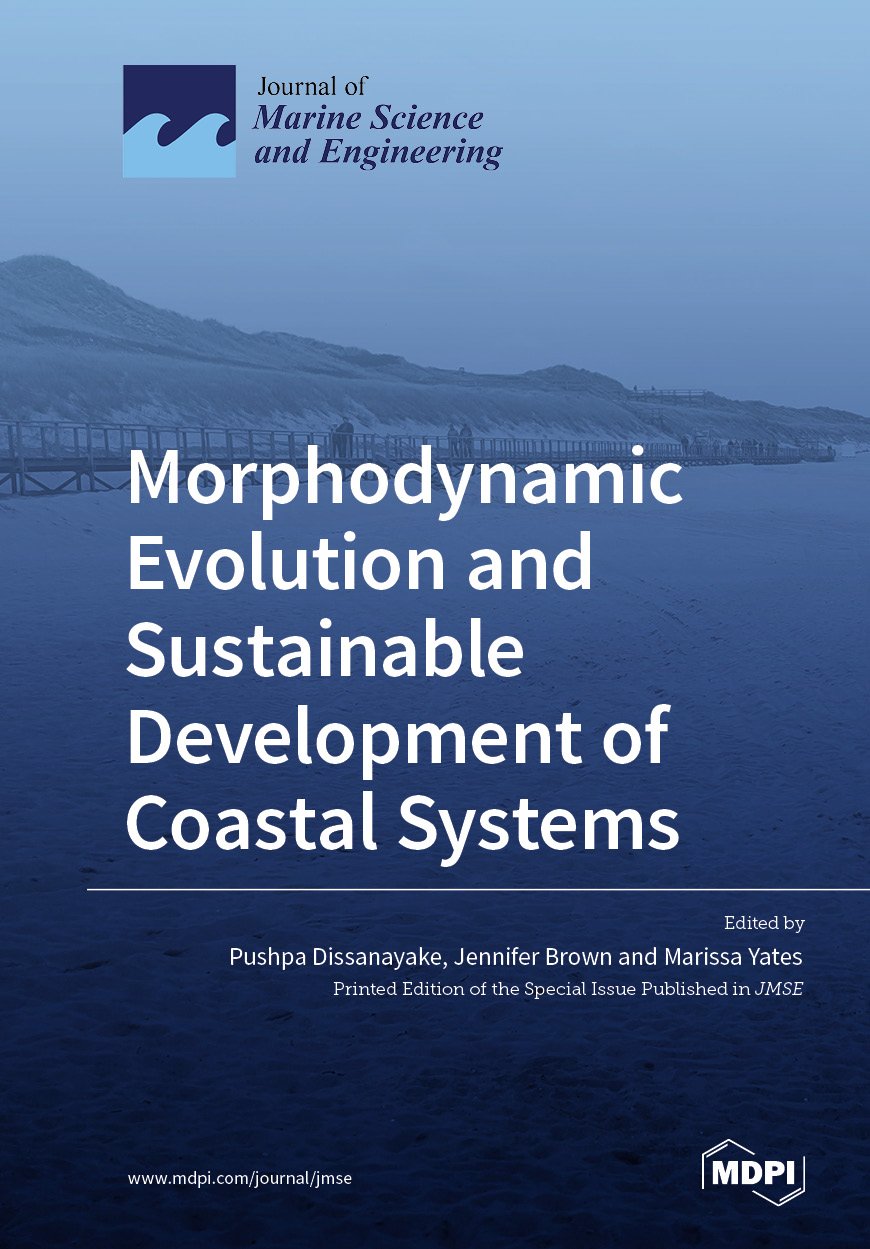
Journal Menu
► ▼ Journal Menu-
- Buildings Home
- Aims & Scope
- Editorial Board
- Reviewer Board
- Topical Advisory Panel
- Instructions for Authors
- Special Issues
- Topics
- Sections & Collections
- Article Processing Charge
- Indexing & Archiving
- Editor’s Choice Articles
- Most Cited & Viewed
- Journal Statistics
- Journal History
- Journal Awards
- Society Collaborations
- Conferences
- Editorial Office
Journal Browser
► ▼ Journal BrowserNeed Help?
Announcements
28 June 2023
2022 Impact Factors for MDPI Journals
The 2022 citation metrics have been released in the Journal Citation Reports (JCR), and we’re pleased to announce the following results for MDPI journals:

We are thrilled to announce that 90% of our ranked MDPI journals, specifically 86 out of 96 (captured in the table below), are performing above average in Q1 or Q2. This year, Clarivate has expanded its Impact Factor (IF) awards to include journals in the Emerging Sources Citation Index (ESCI) and the Arts and Humanities Citation Index (AHCI), providing greater transparency for the full set of journals indexed in the Web of Science Core Collection. As a result, 111 of MDPI journals have received their first IF in 2023, with 37 journals surpassing an IF of 3.0. In total, 208 MDPI journals have been honored with an IF.
Clarivate explains that by "expanding the coverage but holding to highly selective standards, the [Impact Factor] is now a reliable indicator of trustworthiness, as well as a measure of scholarly impact, at the journal level."
Please visit our blog post where we discuss the release of the latest citation metrics with our Indexing Manager, Dr. Constanze Schelhorn, to find out what's different this time around and how to make use of different metrics available.
| Journal | Impact Factor | Rank Quartile | Category |
| Vaccines | 7.8 | Q1 | Immunology |
| Medicine, Research & Experimental | |||
| Antioxidants | 7.0 | Q1 | Food Science & Technology |
| Biochemistry & Molecular Biology | |||
| Chemistry, Medicinal | |||
| Cells | 6.0 | Q2 | Cell Biology |
| Nutrients | 5.9 | Q1 | Nutrition & Dietetics |
| International Journal of Molecular Sciences | 5.6 | Q1 | Biochemistry & Molecular Biology |
| Q2 | Chemistry, Multidisciplinary | ||
| Journal of Theoretical and Applied Electronic Commerce Research | 5.6 | Q2 | Business |
| Biomolecules | 5.5 | Q1 | Biochemistry & Molecular Biology |
| Biosensors | 5.4 | Q1 | Chemistry, Analytical |
| Instruments & Instrumentation | |||
| Q2 | Nanoscience & Nanotechnology | ||
| Fractal and Fractional | 5.4 | Q1 | Mathematics, Interdisciplinary Applications |
| Marine Drugs | 5.4 | Q1 | Chemistry, Medicinal |
| Pharmacology & Pharmacy | |||
| Pharmaceutics | 5.4 | Q1 | Pharmacology & Pharmacy |
| Nanomaterials | 5.3 | Q1 | Physics, Applied |
| Q2 | Chemistry, Multidisciplinary | ||
| Materials Science, Multidisciplinary | |||
| Nanoscience & Nanotechnology | |||
| Cancers | 5.2 | Q2 | Oncology |
| Foods | 5.2 | Q1 | Food Science & Technology |
| Polymers | 5.0 | Q1 | Polymer Science |
| Remote Sensing | 5.0 | Q1 | Geosciences, Multidisciplinary |
| Q2 | Remote Sensing | ||
| Imaging Science & Photographic Technology | |||
| Environmental Sciences | |||
| Antibiotics | 4.8 | Q1 | Pharmacology & Pharmacy |
| Q2 | Infectious Diseases | ||
| Drones | 4.8 | Q2 | Remote Sensing |
| Journal of Functional Biomaterials | 4.8 | Q2 | Engineering, Biomedical |
| Materials Science, Biomaterials | |||
| Biomedicines | 4.7 | Q1 | Pharmacology & Pharmacy |
| Q2 | Biochemistry & Molecular Biology | ||
| Medicine, Research & Experimental | |||
| Journal of Fungi | 4.7 | Q2 | Mycology |
| Microbiology | |||
| Viruses | 4.7 | Q2 | Virology |
| Bioengineering | 4.6 | Q2 | Engineering, Biomedical |
| Gels | 4.6 | Q1 | Polymer Science |
| Molecules | 4.6 | Q2 | Chemistry, Multidisciplinary |
| Biochemistry & Molecular Biology | |||
| Pharmaceuticals | 4.6 | Q2 | Pharmacology & Pharmacy |
| Chemistry, Medicinal | |||
| Toxics | 4.6 | Q1 | Toxicology |
| Q2 | Environmental Sciences | ||
| Biomimetics | 4.5 | Q1 | Engineering, Multidisciplinary |
| Q2 | Materials Science, Biomaterials | ||
| Microorganisms | 4.5 | Q2 | Microbiology |
| Plants | 4.5 | Q1 | Plant Sciences |
| Biology | 4.2 | Q2 | Biology |
| Chemosensors | 4.2 | Q2 | Instruments & Instrumentation |
| Chemistry, Analytical | |||
| Electrochemistry | |||
| Membranes | 4.2 | Q2 | Engineering, Chemical |
| Materials Science, Multidisciplinary | |||
| Chemistry, Physical | |||
| Polymer Science | |||
| Toxins | 4.2 | Q1 | Toxicology |
| Q2 | Food Science & Technology | ||
| Metabolites | 4.2 | Q2 | Biochemistry & Molecular Biology |
| Batteries | 4.0 | Q2 | Electrochemistry |
| Materials Science, Multidisciplinary | |||
| Q3 | Energy & Fuels | ||
| Catalysts | 3.9 | Q2 | Chemistry, Physical |
| Journal of Clinical Medicine | 3.9 | Q2 | Medicine, General & Internal |
| Land | 3.9 | Q2 | Environmental Studies |
| Sensors | 3.9 | Q2 | Instruments & Instrumentation |
| Chemistry, Analytical | |||
| Engineering, Electrical & Electronic | |||
| Sustainability | 3.9 | Q2 | Environmental Sciences (SCIE) |
| Environmental Studies (SSCI) | |||
| Q3 | Green & Sustainable Science & Technology (SCIE) | ||
| Green & Sustainable Science & Technology (SSCI) | |||
| Buildings | 3.8 | Q2 | Construction & Building Technology |
| Engineering, Civil | |||
| Agronomy | 3.7 | Q1 | Agronomy |
| Q2 | Plant Sciences | ||
| Fermentation | 3.7 | Q2 | Biotechnology & Applied Microbiology |
| Pathogens | 3.7 | Q2 | Microbiology |
| Agriculture | 3.6 | Q1 | Agronomy |
| Diagnostics | 3.6 | Q2 | Medicine, General & Internal |
| Genes | 3.5 | Q2 | Genetics & Heredity |
| Journal of Intelligence | 3.5 | Q2 | Psychology, Multidisciplinary |
| Lubricants | 3.5 | Q2 | Engineering, Mechanical |
| Processes | 3.5 | Q2 | Engineering, Chemical |
| Coatings | 3.4 | Q2 | Materials Science, Coatings & Films |
| Physics, Applied | |||
| Q3 | Materials Science, Multidisciplinary | ||
| ISPRS International Journal of Geo-Information | 3.4 | Q2 | Geography, Physical |
| Q3 | Computer Science, Information Systems | ||
| Remote Sensing | |||
| Materials | 3.4 | Q2 | Metallurgy & Metallurgical Engineering |
| Physics, Applied | |||
| Physics, Condensed Matter | |||
| Q3 | Materials Science, Multidisciplinary | ||
| Chemistry, Physical | |||
| Micromachines | 3.4 | Q2 | Instruments & Instrumentation |
| Physics, Applied | |||
| Chemistry, Analytical | |||
| Q3 | Nanoscience & Nanotechnology | ||
| Water | 3.4 | Q2 | Water Resources |
| Environmental Sciences | |||
| Brain Sciences | 3.3 | Q3 | Neurosciences |
| Energies | 3.2 | Q3 | Energy & Fuels |
| Fire | 3.2 | Q1 | Forestry |
| Q2 | Ecology | ||
| Life | 3.2 | Q2 | Biology |
| Current Issues in Molecular Biology | 3.1 | Q3 | Biochemistry & Molecular Biology |
| Horticulturae | 3.1 | Q1 | Horticulture |
| Animals | 3.0 | Q1 | Agriculture, Dairy & Animal Science |
| Veterinary Sciences | |||
| Insects | 3.0 | Q1 | Entomology |
| Atmosphere | 2.9 | Q3 | Meteorology & Atmospheric Sciences |
| Environmental Sciences | |||
| Electronics | 2.9 | Q2 | Engineering, Electrical & Electronic |
| Physics, Applied | |||
| Q3 | Computer Science, Information Systems | ||
| Forests | 2.9 | Q1 | Forestry |
| Inorganics | 2.9 | Q2 | Chemistry, Inorganic & Nuclear |
| Journal of Marine Science and Engineering | 2.9 | Q1 | Engineering, Marine |
| Q2 | Oceanography | ||
| Engineering, Ocean | |||
| Metals | 2.9 | Q2 | Metallurgy & Metallurgical Engineering |
| Q3 | Materials Science, Multidisciplinary | ||
| Tropical Medicine and Infectious Disease | 2.9 | Q2 | Tropical Medicine |
| Parasitology | |||
| Q3 | Infectious Diseases | ||
| Universe | 2.9 | Q2 | Astronomy & Astrophysics |
| Physics, Particles & Fields | |||
| Healthcare | 2.8 | Q2 | Health Policy & Services (SSCI) |
| Q3 | Health Care Sciences & Services (SCIE) | ||
| Applied Sciences | 2.7 | Q2 | Engineering, Multidisciplinary |
| Physics, Applied | |||
| Q3 | Chemistry, Multidisciplinary | ||
| Materials Science, Multidisciplinary | |||
| Crystals | 2.7 | Q2 | Crystallography |
| Q3 | Materials Science, Multidisciplinary | ||
| Entropy | 2.7 | Q2 | Physics, Multidisciplinary |
| Magnetochemistry | 2.7 | Q2 | Chemistry, Inorganic & Nuclear |
| Q3 | Chemistry, Physical | ||
| Materials Science, Multidisciplinary | |||
| Symmetry | 2.7 | Q2 | Multidisciplinary Sciences |
| Actuators | 2.6 | Q2 | Instruments & Instrumentation |
| Engineering, Mechanical | |||
| Aerospace | 2.6 | Q1 | Engineering, Aerospace |
| Behavioral Sciences | 2.6 | Q2 | Psychology, Multidisciplinary |
| Current Oncology | 2.6 | Q3 | Oncology |
| Machines | 2.6 | Q2 | Engineering, Mechanical |
| Q3 | Engineering, Electrical & Electronic | ||
| Medicina | 2.6 | Q3 | Medicine, General & Internal |
| Separations | 2.6 | Q3 | Chemistry, Analytical |
| Minerals | 2.5 | Q2 | Mining & Mineral Processing |
| Mineralogy | |||
| Geochemistry & Geophysics | |||
| Children | 2.4 | Q2 | Pediatrics |
| Diversity | 2.4 | Q2 | Biodiversity Conservation |
| Q3 | Ecology | ||
| Journal of Cardiovascular Development and Disease | 2.4 | Q3 | Cardiac & Cardiovascular Systems |
| Mathematics | 2.4 | Q1 | Mathematics |
| Photonics | 2.4 | Q3 | Optics |
| Veterinary Sciences | 2.4 | Q1 | Veterinary Sciences |
| Fishes | 2.3 | Q2 | Marine & Freshwater Biology |
| Fisheries | |||
| Axioms | 2.0 | Q2 | Mathematics, Applied |
| Systems | 1.9 | Q2 | Social Sciences, Interdisciplinary |
| Tomography | 1.9 | Q3 | Radiology, Nuclear Medicine & Medical Imaging |
Note: The Journal of Personalized Medicine's Impact Factor was omitted in the original release and will be assigned separately. Please find the data on the journal webpage in due course.
Source: 2022 Journal Impact Factors, Journal Citation Reports TM (Clarivate, 2023)
28 June 2023
The 1st International Online Conference on Buildings: Advances in Building Planning, Design, Construction, and Operation

[IOCBD 2023] The 1st International Online Conference on Buildings (24–26 October 2023, Online)—Submission Deadline Extension
Dear scientists, researchers, and authors,
We would like to inform you that the submission schedule of the 1st International Online Conference on Buildings: Advances in Building Planning, Design, Construction, and Operation (IOCBD 2023) has been updated.
Schedule
Abstract Submission Deadline: 26 June 2023 26 July 2023
Notification of Acceptance Deadline: 24 July 2023 11 August 2023
Early Bird Registration Deadline: 10 September 2023
Conference: 24–26 October 2023
This conference aims to provide leading scientists working in the field of buildings with a robust common platform on which to share and discuss their latest research, and to promote the advancement of this exciting and rapidly changing field. We hope to encourage discovery across the discipline as we cover the following five themes in sessions S1–S5, as listed below:
- S1. Building Structures
- S2. Architectural Design, Urban Science, and Real Estate
- S3. Building Materials, and Repair & Renovation
- S4. Building Energy, Physics, Environment, and Systems
- S5. Construction Management, and Computers & Digitization
During the 3-day event, participants can present short talks on their work and engage in stimulating discussions. Please submit your abstract before 26 July 2023 at the section “Submit Abstract” and do not miss the chance to win our Best Presentation Award (500CHF). Authors will be selected to either give an oral presentation of 10-12 minutes, or a 5-minute poster presentation. Authors also have the option to submit their proceeding paper after their abstract before 20 September 2023 to win the Best Paper Award (500 CHF). Early bird registration is open until 10 September 2023. You can find more information about registration fees at https://iocbd2023.sciforum.net/#registration.
For information about the procedure for submission, peer review, revision, and acceptance of conference proceedings papers, please refer to the section “Instructions for Authors”.
We look forward to receiving your abstracts and welcoming you to this e-conference.
Please do not hesitate to contact us if you have any questions.
Kind regards,
Prof. Dr. David Arditi
Illinois Institute of Technology, USA
Conference Secretariat
Ms. Gem Yao
Ms. David Hu
Ms. Alethea Liu
E-Mail: iocbd2023@mdpi.com
16 June 2023
2023 International Women in Engineering Day

International Women in Engineering Day is an international awareness campaign to raise the profile of women in engineering and focus attention on the amazing career opportunities available to girls and women in this exciting industry. The theme for this year is #makesafetyseen, and we would like to highlight the outstanding achievements of female engineers and celebrate this campaign with the brightest and bravest women in engineering.

|
|
|
|
|
|


- Retention over Attraction: A Review of Women’s Experiences in the Australian Construction Industry; Challenges and Solutions
by Amir Naser Ghanbaripour, Roksana Jahan Tumpa, Riza Yosia Sunindijo, Weiwei Zhang, Parinaz Yousefian, Ranka Novak Camozzi, Carol Hon, Nima Talebian, Tingting Liu and Mina Hemmati
Buildings 2023, 13(2), 490; https://doi.org/10.3390/buildings13020490
- Colorimetric Paper Sensor for Food Spoilage Based on Biogenic Amine Monitoring
by Maria Maddalena Calabretta, Denise Gregucci, Riccardo Desiderio and Elisa Michelini
Biosensors 2023, 13(1), 126; https://doi.org/10.3390/bios13010126
- Dynamic Control of a Novel Planar Cable-Driven Parallel Robot with a Large Wrench Feasible Workspace
by Sergio Juárez-Pérez, Andrea Martín-Parra, Andrea Arena, Erika Ottaviano, Vincenzo Gattulli and Fernando J. Castillo-García
Actuators 2022, 11(12), 367; https://doi.org/10.3390/act11120367
- Review—Recent Progress in Graphene Based Modified Electrodes for Electrochemical Detection of Dopamine
by Zouhour Hsine, Rym Mlika, Nicole Jaffrezic-Renault and Hafsa Korri-Youssoufi
Chemosensors 2022, 10(7), 249; https://doi.org/10.3390/chemosensors10070249
- Controlling Aircraft Inter-Arrival Time to Reduce Arrival Traffic Delay via a Queue-Based Integer Programming Approach
by Koki Higasa and Eri Itoh
Aerospace 2022, 9(11), 663; https://doi.org/10.3390/aerospace9110663
- Spectral Methods for Response Enhancement of Microwave Resonant Sensors in Continuous Non-Invasive Blood Glucose Monitoring
by Giovanni Buonanno, Adriana Brancaccio, Sandra Costanzo and Raffaele Solimene
Bioengineering 2022, 9(4), 156; https://doi.org/10.3390/bioengineering9040156
- IBM Quantum Platforms: A Quantum Battery Perspective
by Giulia Gemme, Michele Grossi, Dario Ferraro, Sofia Vallecorsa and Maura Sassetti
Batteries 2022, 8(5), 43; https://doi.org/10.3390/batteries8050043
- Water-Based Lubricants: Development, Properties, and Performances
by Md Hafizur Rahman, Haley Warneke, Haley Webbert, Joaquin Rodriguez, Ethan Austin, Keli Tokunaga, Dipen Kumar Rajak and Pradeep L. Menezes
Lubricants 2021, 9(8), 73; https://doi.org/10.3390/lubricants9080073
- Motion Planning and Control of Redundant Manipulators for Dynamical Obstacle Avoidance
by Giacomo Palmieri and Cecilia Scoccia
Machines 2021, 9(6), 121; https://doi.org/10.3390/machines9060121
- Unmanned Aerial Vehicles for Wildland Fires: Sensing, Perception, Cooperation and Assistance
by Moulay A. Akhloufi, Andy Couturier and Nicolás A. Castro
Drones 2021, 5(1), 15; https://doi.org/10.3390/drones5010015

|
Special Issue: “Advancing towards 6G Networks” |
Special Issue: “Sensors for Artificial Movement Control” |
 |
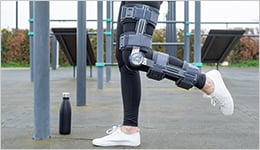 |
|
Special Issue: “Enhancing Workplace Safety Management in the Construction Industry” |
Special Issue: “Sustainable Civil Supersonic and Hypersonic Aircraft: Main Challenges and Latest Developments” |
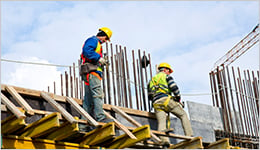 |
 |

5 June 2023
Meet Us at the 7th ECCOMAS Young Investigators Conference (YIC 2023), 19–21 June 2023, Porto, Portugal

Conference: 7th ECCOMAS Young Investigators Conference (YIC 2023)
Date: 19–21 June 2023
Location: Porto, Portugal
MDPI will be attending YIC 2023 as an exhibitor; we welcome researchers from different backgrounds to visit and share their latest ideas with us.
YIC 2023 is the 7th in the series of international conferences, organized since 2012, with the main purpose of bringing students and young researchers together within a relaxed environment, developing their work in all areas related to computational science and engineering.
The following MDPI journals will be represented:
- Mathematics;
- AppliedMath;
- Algorithms;
- Fluids;
- Materials;
- Buildings;
- MCA;
- Computation;
- Symmetry.
If you are attending this conference, please visit our booth. Our delegates look forward to meeting you in person and answering any questions that you may have. For more information about the conference, please visit the following website: https://paginas.fe.up.pt/~yic2023/.
12 May 2023
Meet Us at the 18th International Conference on Waste Management and Technology (ICWMT18), 20–23 May 2023, Sanya, China

MDPI will be attending the 18th International Conference on Waste Management and Technology (ICWMT18), held in Sanya, China, from 20 to 23 May 2023. The theme of this year’s conference is “Synergizing the Reduction of Pollution and Carbon Emission”. Throughout the conference, prominent researchers and government officials will give keynote speeches on pressing issues of solid waste management. ICWMT18 provides an excellent opportunity for participants from industry and academia to keep up to date with the latest trends in solid waste management.
During this conference, MDPI will welcome researchers from different backgrounds to visit and share their latest views as well as research with us.
The following MDPI journals will be represented:
- Sustainability;
- Environments;
- Atmosphere;
- Buildings;
- Resources;
- Smart Cities;
- Sustainable Chemistry;
- Pollutants;
- Microplastics.
If you are attending this conference, please stop by our booth. Our delegates look forward to meeting you in person to answer any questions that you may have. For more information about the conference, please visit the following link: http://www.bcrc.cn/icwmt-eng/.
20 April 2023
Buildings Webinar | Infrared Thermography for Building Pathology Inspection, 30 May 2023

Infrared thermography (IRT) has been increasingly used in the past decades to assess defects and the energy performance of buildings. Despite all the opportunities it presents for a better diagnosis, its use still mainly relies on a qualitative and more superficial evaluation of the results. However, there has been an attempt to implement quantitative interpretation methodologies, which guarantee more reliable analyses. However, some issues remain a challenge for the technical and scientific community, which drives a deep reflection both on the test procedures and on the methodologies to interpret the results clearly. This webinar aims at stimulating the exchange of ideas and knowledge on the application of IRT for buildings diagnostics.
Date: 30 May 2023 at 10:00 a.m. CEST | 4:00 a.m. EDT | 4:00 p.m. CST Asia
Webinar ID: 857 2118 6971
Register now for free!
|
Speaker/Presentation |
Time in CEST |
Time in CST Asia |
|
Dr. Eva Barreira Chair Introduction |
10:00–10:15 a.m. |
4:00–4:15 p.m. |
|
Dr. Blanca Tejedor U-Value Characterization Using Infrared Thermography |
10:15–10:30 a.m. |
4:15–4:30 p.m. |
|
Q&A (Questions by the attendees) |
10:30–10:35 a.m. |
4:30–4:35 p.m. |
|
Dr. Ivan Garrido |
10:35–10:50 a.m. |
4:35–4:50 p.m. |
|
Q&A (Questions by the attendees) |
10:50–10:55 a.m. |
4:50–4:55 p.m. |
|
Dr. Ricardo Almeida |
10:55–11:10 a.m. |
4:55–5:10 p.m. |
|
Q&A (Questions by the attendees) |
11:10–11:15 a.m. |
5:10–5:15 p.m. |
|
Dr. Eva Barreira |
11:15–11:30 a.m. |
5:15–5:30 p.m. |
After registering, you will receive a confirmation email containing information on how to join the webinar. Registrations with academic institutional email addresses will be prioritized.
Can’t attend? Register anyway and we’ll let you know when the recording is available to watch.
Webinar Chair and Keynote Speakers:
- Dr. Eva Barreira, CONSTRUCT, Department of Civil Engineering, Faculty of Engineering (FEUP), University of Porto, Porto, Portugal
- Dr. Blanca Tejedor, Department of Projects and Construction Engineering, Polytechnic University of Catalonia, Barcelona, Spain
- Dr. Ivan Garrido, National Defense University Center, Naval Military Academy, Pontevedra, Spain
- Dr. Ricardo Almeida, Polytechnic Institute of Viseu, Department of Civil Engineering, Campus Politécnico de Repeses, Viseu, Portugal
13 March 2023
MDPI’s Newly Launched Journals in December 2022
As a leading open access publisher, MDPI provides scholars with a high-quality and rich academic exchange platform by continuously expanding into new and exciting research areas.
In December 2022, MDPI launched five new journals, covering multiple subjects such as life sciences, biology, medicine and pharmacology, social sciences and humanities. These new journals are being edited by established scholars across the world.
|
Journal |
Founding Editor-in-Chief |
Journal Topics (Selected) |
|
Prof. Dr. Fabio Gresta, University of Messina, Italy| Editorial | view inaugural issue |
grass/forage/turf production; grassland management; pasture monitoring; grazing and livestock; grass agro-ecosystems| view journal scope | submit an article |
|
|
Prof. Dr. Christos G. Athanassiou, University of Thessaly, Greece| Editorial | view inaugural issue |
pesticides; fungicides; herbicides; fertilizers; soil conditioners| view journal scope | submit an article |
|
|
Prof. Dr. Stephen H. Safe, Texas A&M University, USA| Editorial | view inaugural issue |
receptor structure; receptor function; receptor signaling; receptor expression and regulation; receptor interactions with drugs| view journal scope | submit an article |
|
|
Dr. Jean Jacques Vanden Eynde, University of Mons-UMONS, Belgium| Editorial | view inaugural issue |
drug discovery; medicinal chemistry; preclinical and clinical research; marketed drugs; intellectual property and regulatory affairs| view journal scope | submit an article |
|
|
Prof. Dr. Heather Kanuka, University of Alberta, Canada| Editorial | view inaugural issue |
higher education; tertiary education; policy and practice in higher education; educational leadership in higher education; educational administration and management in higher education| view journal scope | submit an article |
If you are interested in creating more open access journals with us to publish cutting-edge research, please send your journal proposal application to newjournal-committee@mdpi.com.
7 March 2023
Displaying Co-Authors’ Email Addresses on the Webpage of Published Papers
MDPI is pleased to announce that we now display the co-authors’ email addresses in addition to the corresponding author’s email address on the webpage of published papers, protected by Captcha. For more information about this change, please visit the journal’s instructions for authors page.
We believe this change will facilitate academic discussions and advance our cause of open science and research. The corresponding authors are responsible for communicating with their co-authors and indicating in our system (https://susy.mdpi.com/) if co-authors would prefer for their email addresses not to be displayed.
16 February 2023
Increasing Visibility for Preprints.org – Clarivate adds the Preprint Citation Index to the Web of Science

On 9 February 2023, Clarivate, a global leader in providing trusted insights and analytics, added the Preprint Citation Index to the Web of Science platform, streamlining the research process by allowing researchers to locate and link to preprints alongside other trusted content in the database.
The Preprint Citation Index will act as a bridge to connect cutting-edge preprints with peer-reviewed journal articles published within the Web of Science Core Collection. Alerts can be easily set to monitor new research across several repositories and authors will also be able to include preprints on their Web of Science Research Profile to more accurately display their various research outputs.
As of its launch, the Preprint Citation Index will provide nearly two million preprints from various repositories, including MDPI’s own Preprints.org.
MDPI's Preprints Platform – Preprints.org
To advance Open Science and the fast dissemination of research, MDPI offers researchers a free multidisciplinary preprint platform. Preprints.org accepts submissions from all research areas and offers authors high visibility, permanent archiving, article-level Metrics and immediately citable content by assigning a Digital Object Identifier (DOI) to all preprints.
During submission to any MDPI journal, authors have the option to share their research as a preprint. After an initial screening, the manuscript is available online in 48 hours or less. Once online, preprints can be downloaded, shared, commented on, and cited, providing authors maximum visibility.
We invite you to join the ranks of the over 100k researchers using Preprints.org and share your research.
For more information, please visit Preprints.org.
8 February 2023
2022 Buildings Outstanding Reviewer Awards—Winners Announced
Peer review is an essential part of the publication process and is important in ensuring that Buildings (ISSN: 2075-5309) maintains high-quality standards for its published papers. The Buildings Editorial Board and editorial team would like to gratefully acknowledge the time and energy dedicated by reviewers to checking the manuscripts submitted to the journal.
The following reviewers have been selected to receive the 2022 Buildings Outstanding Reviewer Awards based on the quantity, timeliness, and quality of their reviews in Buildings. The winners will each receive CHF 500, the privilege of publishing a paper free of charge in Buildings in 2023, and a certificate in recognition of their outstanding work.

Dr. Paolo Blecich, Associate Professor, Faculty of Engineering, University of Rijeka, 51000 Rijeka, Croatia
Dr. Blecich holds a Ph.D. degree in mechanical engineering. He serves as an Associate Professor of Thermodynamics and Thermal Engineering at the Faculty of Engineering of the University of Rijeka, Croatia. He is also Head of the Laboratory for Thermal Measurements. He teaches undergraduate and graduate-level classes of Thermodynamics, Gas Engineering, Renewable Energy, and Thermal Measurements. His scientific efforts are focused on the fields of heat and mass transfer, buildings energy analysis, energy efficiency, and energy conversion and management.

Dr. Łukasz Ścislo, Assistant Professor, Faculty of Electrical and Computer Engineering, Cracow University of Technology, 31-155 Cracow, Poland
Dr. Ścislo holds a Ph.D. degree in mechanical engineering. He serves as an Assistant Professor at the Faculty of Electrical and Computer Engineering, Cracow University of Technology, Cracow, Poland. Between 2018 and 2021, he worked as a Vibration Expert Engineer at the Mechanical Measurement Laboratory at CERN (European Organization for Nuclear Research), where he was connecting his theoretical knowledge and numerical analysis experience with practical skills in numerous high-tech projects regarding vibration measurements and analysis, seismic measurements, and sensor development. His current scientific interests include noise and vibration measurement and suppression techniques, smart structures, sensing technologies, structural health monitoring, and fault diagnosis.




